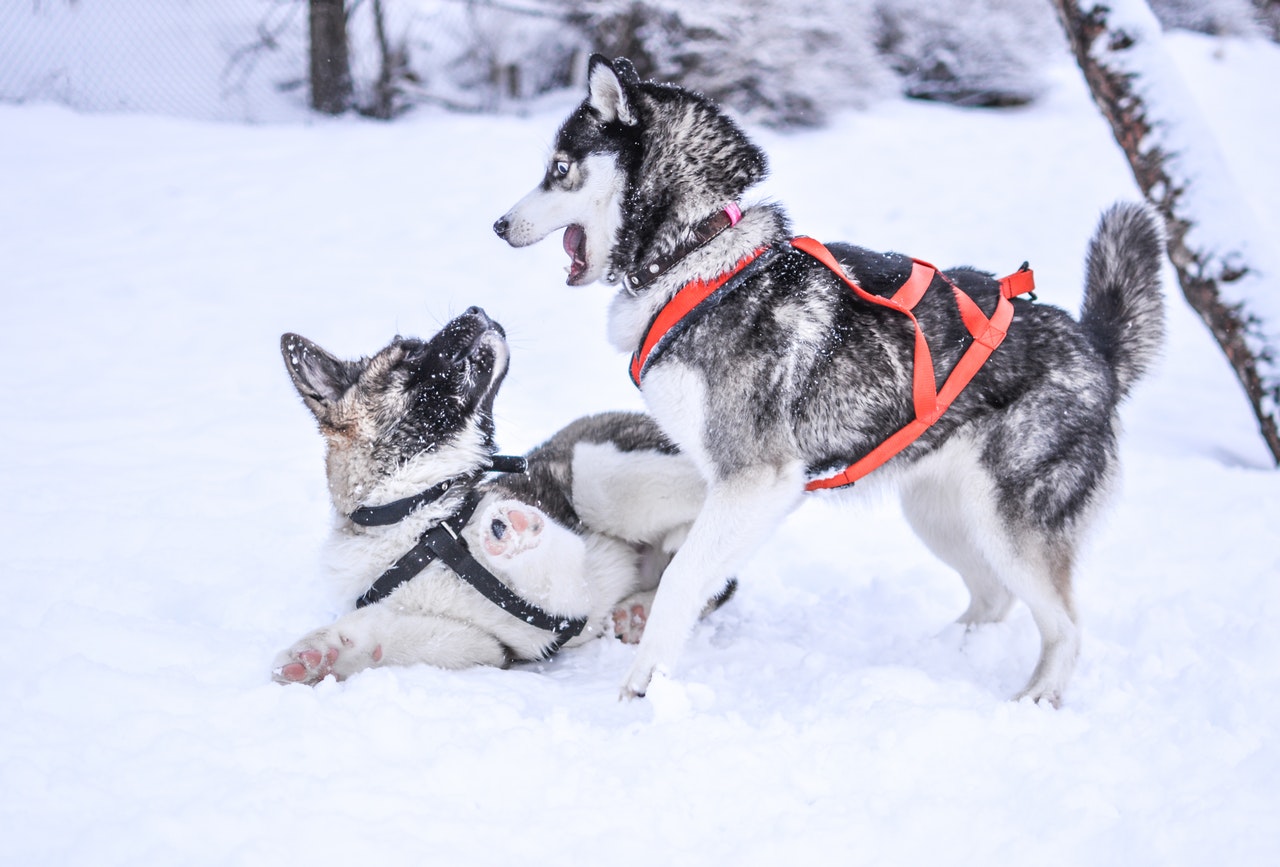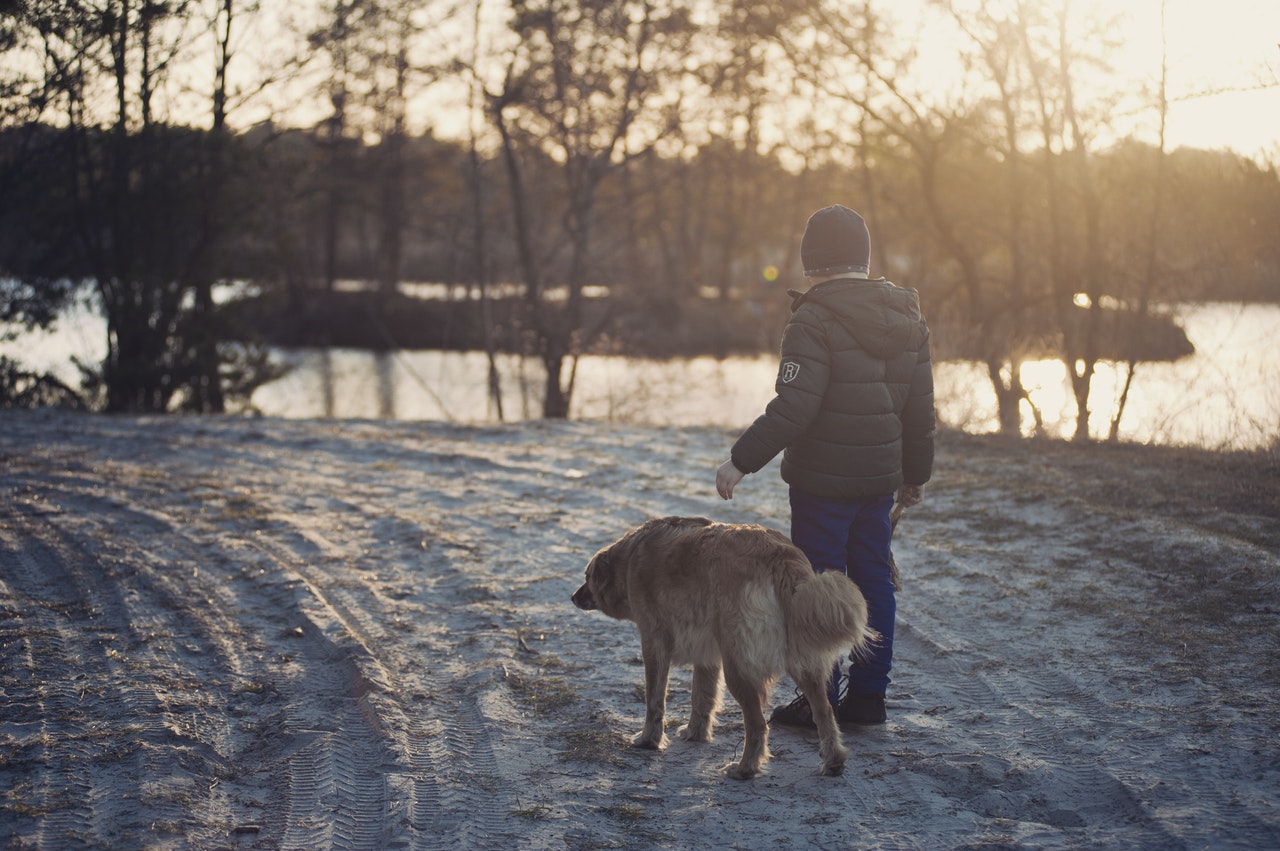2018-12-26

For people living in places blanketed by snow in winter, staying at home with a heater is the best option. However, the minus temperatures are a big challenge for service dogs, who have to accompany the owners and fulfill special tasks. There are certain risks of taking our service dog to work or playing with it in the snow, but we can avert the dangers with a few tricks. Continue reading on how to keep yourself and your pup safe while walking in the freezing cold.
Dangers when walking with dogs in the snow
Service dogs need to pay close attention to their work both in the hot summer and in the freezing winter. They are responsible for the movement and safety of their owners, which means that they have to take a double risk of danger than a household dog.
1. Slippery ice. Although your four-legged friend may have a strong physique, he may still slip and fall on icy sidewalks or stairs. Especially, in dogs whose paws have not been attended to for a long time, the long nails or hair on the toes can reduce the friction to the ice and lead to slipping.
2. Road salt and paws. Once the snow and ice become so thick that they cause trouble when walking, people will scatter road salt to melt the snow and to prevent people from slipping and falling or cars from crashing. However, this salt can be harmful if it comes into direct contact with the skin and severely burns the paws, making your pup feel uncomfortable or experience pain while walking.
3. Waste and bacteria hidden in the snow
Walking in winter is prone to lead to dehydration due to the strong moisture consumption in cold winds. Do not let your dog eat the snow or drink the meltwater as snow can hide a lot of bacteria, waste and chemicals (such as road salt and antifreeze) and drinking these harmful substances can aggravate the thirst and the dog can get sick.
4. Skin conditions
Snow trapped in the fur can cause your service dog discomfort such as itching. So your pup wants to help itself and will try to remove the snow by chewing, licking or scratching the skin. However, the dry skin can be injured by constant irritation. In addition, the snow or ice between the pads/toes of the paws may cause frostbites. The owners should always monitor the pup’s skin and movement.

How to eliminate the dangers of snow?
Although service dogs are trained to serve disabled people, they should also be respected and protected. This is especially true during a snowy winter. In fact, some simple measures can help keep our furry friends out of harm’s way. Have a look at a few suggestions on how to do this.
1. Clear the snow.
Before heading out, remove (preferably with a shovel) the ice in front of your door and use pet-friendly rock salt to prevent any further formation of ice. Do not use ordinary road salt as it would burn the paws. Also, in order to improve the friction of the paws, you should trim the nails and hair of the paws of your pup, so he can firmly touch the ground in the snow. If it is snowing heavily and the dog loses its orientation, it is better to keep it on a leash. Make sure he has completed the leash training.
2. Protect the sensitive feet
In addition to ice and snow, the road salt used to melt ice could cause havoc on your dog’s feet for several winter months. Dog boots or paw wax/balm can greatly protect their paws from cold, dangerous chemicals and frostbites. Petroleum jelly, for example, can add a protective layer on the paws. A walk of 15 to 20 minute is enough for a dog to empty the bladder. The large breeds with long and thick coats can keep it longer than small puppies. Remember to wipe his paws before going back in to prevent him from licking them. If you are worried that your dog can not move his legs happily in the snow, it is advisable to provide more exercise or training at home.
3. Drink plenty of water
To avoid dehydration, you and your dog should drink plenty of water before or after the walks. If you go outside longer, you should also take a thermos with warm water. Also, make sure that your dog does not eat snow or garbage, although a well-trained service dog would not drink or eat without the owner’s instructions.
4. Wipe off the snow with towels
After a walk in the snow, your service dog, especially a long-haired breed one, has plenty of snow in its fur. It is advisable to remove the snow and dry your pup with towels to prevent your home from getting wet or muddy paw prints everywhere. In addition, if your service dog is a small or short-haired breed, it may feel the cold more easily than other breeds. So if you put a warm sweater or coat on it before you go outside, it can stave off the cold.